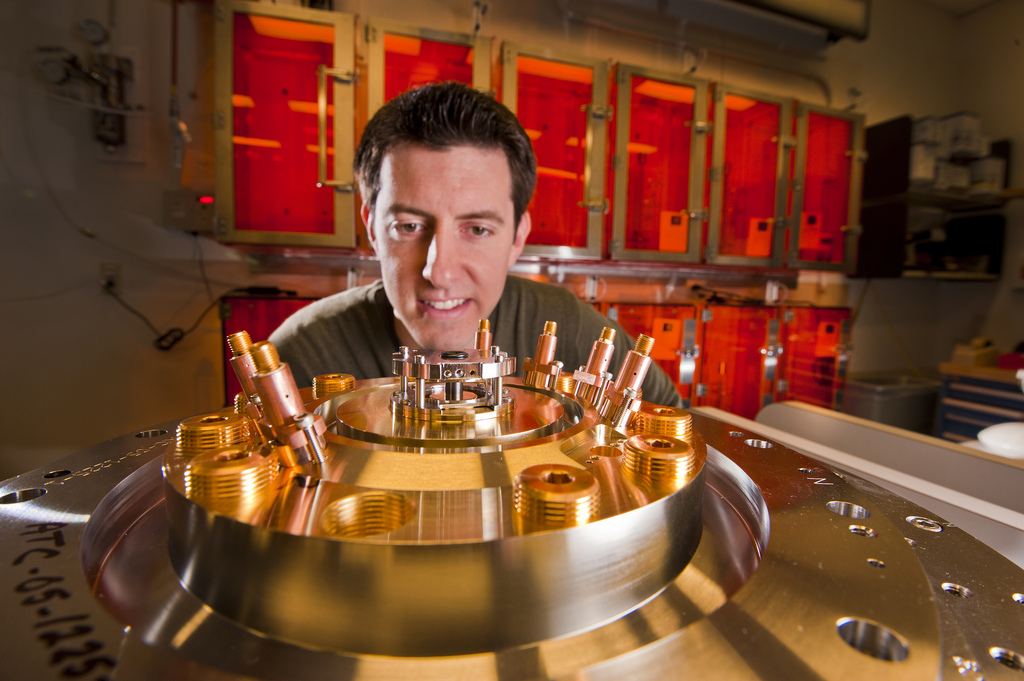Grand Engineering Challenge – Providing Energy from Fusion

Fusion is a process by which two light nuclei join together (fuse) to form a heavier nucleus, and in doing so release considerable energy. Achieving this requires high temperatures such as those that drive the fusion processes which power the sun and stars. The aim of fusion research and development is to create conditions on earth which are sufficient to generate many fusion reactions which may be harnessed to produce large amounts of thermal and/or electrical power.
Introduction
Although fusion energy and its potential for unlimited energy production with minimal environmental impacts is attractive for meeting our future energy needs, the high cost and uncertainty of developing a commercial fusion power technology and the uncertainty of it competitiveness with other existing and future power technologies do not present a clear direction for our current involvement in fusion energy research and development.
Measuring the economic and environmental value of fusion energy is complex as such a measurement cannot be carried out simply by understanding the capability and characteristics of fusion technology alone without the connection of this technology to all aspects of the economy both national and international. All energy supply technologies, from existing fossil fuel to renewable technologies, must be considered and depletable resources such as fossil and uranium fuels must be tracked.
The cost of the technology, more specifically the cost of electricity from this technology, relative to other existing and future power technologies will be the primary factor in fusion’s ability to penetrate the energy market. Also the time in which the fusion power technology is available is important if the benefit is to be captured in the near future and if environmental impacts such as global climate change dictate early action in controlling greenhouse gas emissions.
What is fusion?
Fusion is the energy source for the sun. To be sure, producing power from fusion here on Earth is much more challenging than in the sun. There, enormous heat and gravitational pressure compress the nuclei of certain atoms into heavier nuclei, releasing energy. Earthbound reactors cannot achieve the high pressures of the sun’s interior.
Deuterium is a relatively uncommon form of hydrogen, but water — each molecule comprising two atoms of hydrogen and one atom of oxygen — is abundant enough to make deuterium supplies essentially unlimited. Oceans could meet the world’s current energy needs for literally billions of years.
Tritium, on the other hand, is radioactive and is extremely scarce in nature. That’s where lithium comes in.
Can we control a fusion reaction?
Human-engineered fusion has already been demonstrated on a small scale. The challenges facing the engineering community are to find ways to scale up the fusion process to commercial proportions, in an efficient, economical, and environmentally benign way.
While other approaches to fusion are being studied, the most advanced involves using magnetic forces to hold the fusion ingredients together. ITER will use this magnetic confinement method in a device known as a tokamak, where the fuels are injected into and confined in a vacuum chamber and heated to temperatures exceeding 100 million degrees. Under those conditions the fusion fuels become a gas-like form of electrically charge matter known as a plasma.
What are the barriers to making fusion reactors work?
For one thing, materials will be needed that can withstand the assaults from products of the fusion reaction. Deuterium-fusion reactions produce helium, which can provide some of the energy to keep the plasma heated. But the main source of energy to be extracted from the reaction comes from neutrons, which are also produced in the fusion reaction.
Not only will the neutrons deposit energy in the blanket material, but their impact will convert atoms in the wall and blanket into radioactive forms. Materials will be needed that can extract heat effectively while surviving the neutron-induced structural weakening for extended periods of time.
Building full-scale fusion-generating facilities will require engineering advances to meet all of these challenges, including better superconducting magnets and advanced vacuum systems. The European Union and Japan are designing the International Fusion Materials Irradiation Facility, where possible materials for fusion plant purposes will be developed and tested.
Will fusion energy be safe?
From a safety standpoint, it poses no risk of a runaway nuclear reaction — it is so difficult to get the fusion reaction going in the first place that it can be quickly stopped by eliminating the injection of fuel. And after engineers learn how to control the first generation of fusion plasmas, from deuterium and tritium fuels, advanced second- or third-generation fuels could reduce radioactivity by orders of magnitude.
The good news is that the first round of challenges are clearly defined, and motivations for meeting them are strong, as fusion fuels offer the irresistible combination of abundant supply with minimum environmental consequences.
Conclusion
In support of a large-scale expansion of humankind into the solar system, fusion system performance at the levels discussed would provide numerous advantages fur space propulsion arid power: (1) Higher specific power values than projected for nuclear or solar electric propulsion, (2) Higher, more flexible specific impulses than chemical, solar, or fission systems can achieve, allowing efficient long-range transportation, and (4) Net-energy-producing fuel, available throughout the solar system. The symbiosis between large-scale space development and fusion energy seems clear, and the key question is not if each will be developed but whether the time frames are consistent.
References:
[1] K.R. Schultz, Why Fusion?, IEEE CONTROL SYSTEMS MAGAZINE, 2006
[2] Sándor Zoletnik, Modeling and Simulation Needs in Fusion Energy Research (Invited Paper), IEEE, 2007
[3] Son H. Kim, John Clarke & Jae Edmonds, THE ECONOMIC VALUE OF FUSION ENERGY, IEEE, 1996
Djekic M (2014-03-12 00:15:48). Grand Engineering Challenge – Providing Energy from Fusion . Australian Science. Retrieved: Dec 13, 2025, from http://ozscience.com/technology/grand-engineering-challenge-providing-energy-from-fusion/
 Follow
Follow
1 thought on “Grand Engineering Challenge – Providing Energy from Fusion”
Comments are closed.